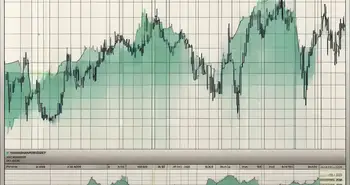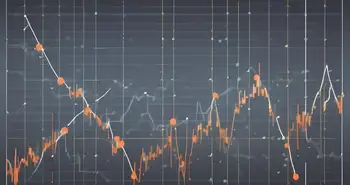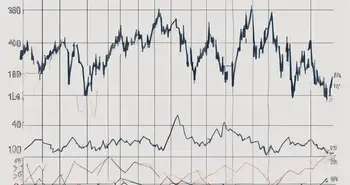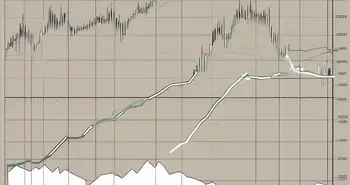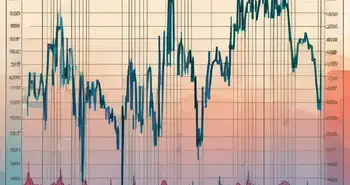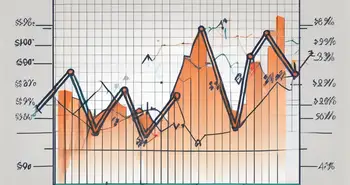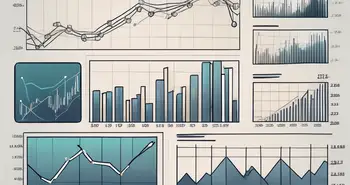Understanding the Williams %R Indicator: A Comprehensive Guide
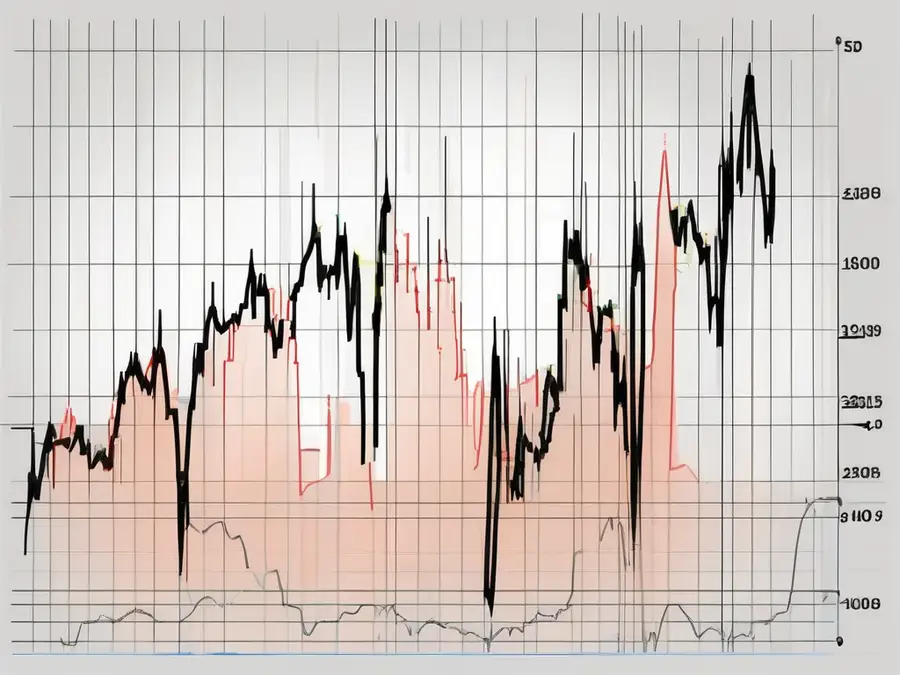
As an expert on technical analysis, I am here to guide you through the intricacies of the Williams %R Indicator. This powerful tool has become a staple for traders seeking to identify overbought and oversold conditions in the market. In this comprehensive guide, we will delve deep into the origins, mathematical formula, interpretation, and practical application of the Williams %R Indicator. So, fasten your seatbelts and let's embark on this enlightening journey together!
Introduction to the Williams %R Indicator
Before we dive into the nitty-gritty details, let's take a moment to understand the purpose and origin of the Williams %R Indicator.
Origin and Purpose of the Williams %R Indicator
The Williams %R Indicator, developed by legendary trader Larry Williams, is a momentum oscillator that measures the relative position of the latest closing price to the highest high and lowest low over a specific period. It is primarily designed to identify overbought and oversold conditions in the market, helping traders capitalize on potential trend reversals.
When Larry Williams created this indicator, he aimed to provide traders with a tool that could effectively gauge the market's momentum and identify extreme price levels. By doing so, traders could potentially anticipate when a market is reaching a point of exhaustion and a reversal in price direction may occur.
The Williams %R Indicator has gained popularity among technical analysts and traders due to its simplicity and effectiveness in identifying overbought and oversold conditions. It provides a visual representation of market sentiment, allowing traders to make informed decisions based on the indicator's readings.
Basic Concept of the Williams %R Indicator
At its core, the Williams %R Indicator oscillates between -100 and 0, with values close to -100 indicating oversold conditions and values near 0 indicating overbought conditions. By monitoring the Williams %R values, traders can gain insights into the strength and direction of a particular trend or anticipate potential trend reversals.
When the Williams %R Indicator reaches values close to -100, it suggests that the market is oversold, meaning that prices have fallen too far and a potential buying opportunity may arise. Conversely, when the indicator approaches 0, it indicates that the market is overbought, suggesting that prices have risen too high and a potential selling opportunity may be on the horizon.
Traders often use the Williams %R Indicator in conjunction with other technical analysis tools to confirm potential trade setups. For example, if the indicator shows an oversold condition and a bullish reversal pattern forms on a price chart, it may provide a stronger signal for a potential buying opportunity.
It is important to note that while the Williams %R Indicator can be a valuable tool in a trader's arsenal, it is not foolproof. Like any technical indicator, it has its limitations and should be used in conjunction with other forms of analysis and risk management techniques.
By understanding the origin, purpose, and basic concept of the Williams %R Indicator, traders can incorporate this tool into their trading strategies and potentially improve their decision-making process in the financial markets.
Understanding the Mathematical Formula Behind Williams %R
Now, let's dig deeper into the mathematical aspects of the Williams %R Indicator.
The Williams %R formula is a popular technical analysis tool used by traders to identify overbought and oversold conditions in the market. It consists of three key components – the highest high, lowest low, and closing price over a specific period. By comparing the current closing price to the highest high and lowest low within that period, we can calculate the Williams %R values.
The Williams %R indicator was developed by Larry Williams, a well-known trader and author. It is a momentum oscillator that measures the level of buying or selling pressure in a market. The indicator is plotted on a scale from -100 to 0, with readings above -20 considered overbought and readings below -80 considered oversold.
Components of the Williams %R Formula
Let's take a closer look at the three key components of the Williams %R formula:
- Highest High: The highest high refers to the highest price reached during the selected period. It represents the peak of bullish momentum and is an important reference point for calculating the Williams %R value.
- Lowest Low: The lowest low, on the other hand, represents the lowest price reached during the selected period. It signifies the trough of bearish momentum and is crucial for determining the Williams %R value.
- Closing Price: The closing price is the final price at which a security or asset trades during a given period. It is the price at which buyers and sellers agree to transact and is an essential input for calculating the Williams %R value.
By comparing the current closing price to the highest high and lowest low, the Williams %R formula provides insights into the strength and potential reversal points of a trend.
Calculating the Williams %R Indicator
To calculate the Williams %R value, we can use the following formula:
Williams %R = (H - C) / (H - L) * -100
Where:
- H: represents the highest high within the selected period.
- C: denotes the current closing price.
- L: signifies the lowest low within the chosen period.
The formula calculates the percentage of the difference between the highest high and the current closing price relative to the difference between the highest high and the lowest low. By multiplying the result by -100, we obtain the Williams %R value.
Traders use the Williams %R indicator to identify potential buy and sell signals. When the indicator reaches extreme levels, such as above -20 or below -80, it suggests that the market may be overbought or oversold, respectively. This information can help traders make informed decisions about entering or exiting positions.
It's important to note that the Williams %R indicator is just one tool among many in a trader's toolbox. It should be used in conjunction with other technical analysis tools and indicators to confirm signals and make well-rounded trading decisions.
Interpreting the Williams %R Indicator
Now that we have a solid foundation in the mechanics of the Williams %R Indicator, let's explore how to interpret its readings.
Overbought and Oversold Levels
When the Williams %R value approaches or falls below -80, it suggests that the market is entering oversold territory. Conversely, values approaching or exceeding -20 indicate that the market is reaching overbought conditions. Traders often look for potential reversals when the indicator reaches these extreme levels.
Divergences and Convergences
In addition to overbought and oversold levels, the Williams %R Indicator can also signal divergences and convergences. Divergences occur when the indicator moves in the opposite direction of price action, potentially indicating a forthcoming trend reversal. On the other hand, convergences happen when the indicator aligns with the price movement, reinforcing the current trend's strength.
Incorporating the Williams %R Indicator into Trading Strategies
Now that we have a solid understanding of the Williams %R Indicator, let's explore some practical ways to incorporate it into your trading strategies.
Timing Entry and Exit Points
The Williams %R Indicator can be a valuable tool for timing entry and exit points in the market. By waiting for the indicator to reach overbought or oversold levels and then confirming the reversal with other technical analysis tools, traders can increase the probability of successful trades.
Combining Williams %R with Other Technical Indicators
To enhance the effectiveness of the Williams %R Indicator, consider combining it with other technical indicators. Moving averages, trendlines, or even other oscillators can provide additional confirmation signals, further strengthening your trading decisions.
Common Misconceptions and Mistakes with the Williams %R Indicator
As powerful as the Williams %R Indicator may be, there are a few common misconceptions and mistakes that traders should be wary of.
Misinterpretation of Overbought and Oversold Levels
One common mistake is relying solely on overbought and oversold levels without considering other factors. It's essential to remember that a market can remain overbought or oversold for an extended period during strong trends. Therefore, it's crucial to use the Williams %R Indicator in conjunction with other tools for a more comprehensive analysis.
Overreliance on the Williams %R Indicator
While the Williams %R Indicator can provide valuable insights, it should never be used in isolation. Remember that no single indicator can guarantee profitability in trading. Therefore, always combine the Williams %R Indicator with other techniques and consider the overall market context.
Now that we have covered a wealth of information about the Williams %R Indicator, it's time to put your newfound knowledge into practice. Remember, practice makes perfect, and it's crucial to test and refine your strategies before risking real capital. As with any trading tool, the Williams %R Indicator requires dedication, discipline, and continuous learning to master.
FAQ
What is the Williams %R Indicator?
The Williams %R Indicator is a momentum oscillator that helps identify overbought and oversold conditions in the market.
How do I calculate the Williams %R Indicator?
To calculate the Williams %R value, use the formula: Williams %R = (H – C) / (H – L) * -100, where H represents the highest high, C denotes the current closing price, and L signifies the lowest low within the selected period.
What are overbought and oversold levels?
When the Williams %R value approaches or falls below -80, it indicates oversold conditions. Conversely, values approaching or exceeding -20 suggest overbought conditions.
Can the Williams %R Indicator be used alone?
No, it is advisable to use the Williams %R Indicator in conjunction with other technical analysis tools for a more comprehensive analysis.
Now armed with a comprehensive understanding of the Williams %R Indicator, go forth and explore the endless possibilities in the realm of trading!
Ready to take your trading to the next level with the insights from the Williams %R Indicator? Discover the future of investing with Morpher, the revolutionary trading platform that leverages blockchain technology for zero fees, infinite liquidity, and a truly unique trading experience. Whether you're interested in stocks, cryptocurrencies, or even niche markets like NFTs, Morpher offers the flexibility of fractional investing, short selling without interest fees, and up to 10x leverage. Sign up now to gain full control over your investments with the Morpher Wallet and receive your Free Sign Up Bonus. Embrace the innovative world of trading where possibilities are endless!

Disclaimer: All investments involve risk, and the past performance of a security, industry, sector, market, financial product, trading strategy, or individual’s trading does not guarantee future results or returns. Investors are fully responsible for any investment decisions they make. Such decisions should be based solely on an evaluation of their financial circumstances, investment objectives, risk tolerance, and liquidity needs. This post does not constitute investment advice.

Painless trading for everyone
Hundreds of markets all in one place - Apple, Bitcoin, Gold, Watches, NFTs, Sneakers and so much more.

Painless trading for everyone
Hundreds of markets all in one place - Apple, Bitcoin, Gold, Watches, NFTs, Sneakers and so much more.


